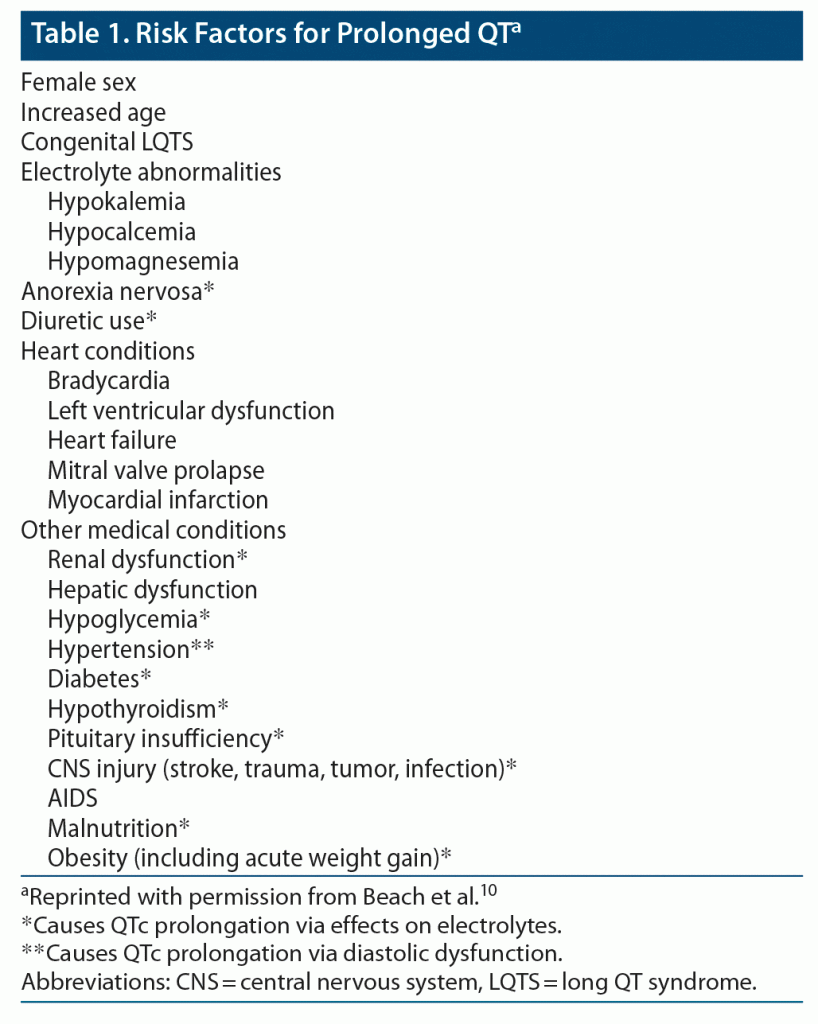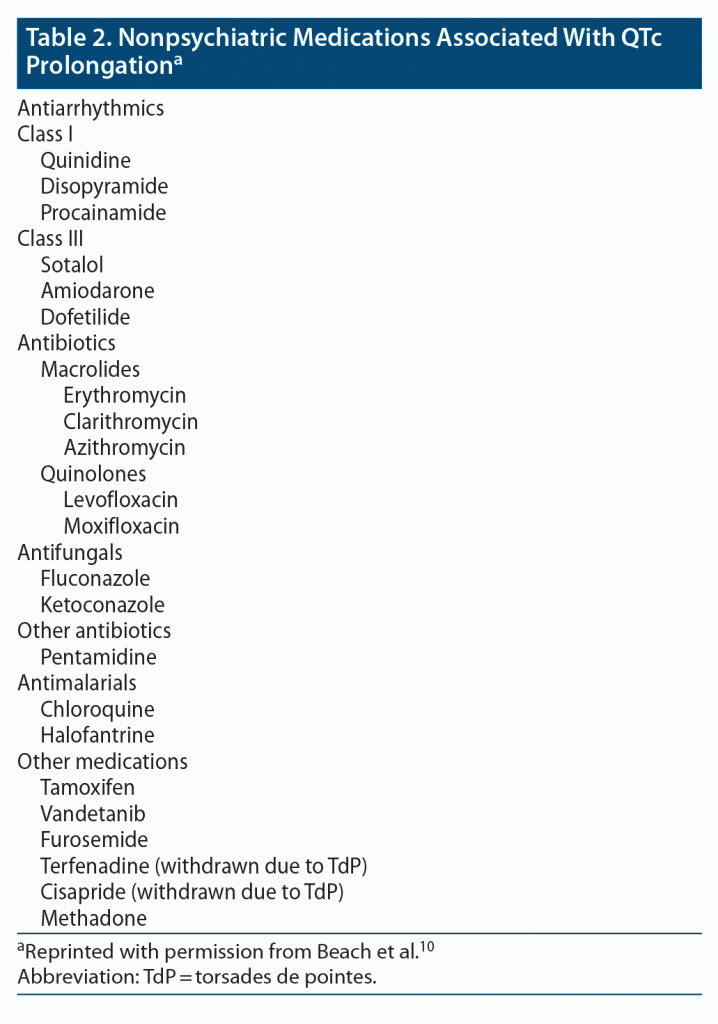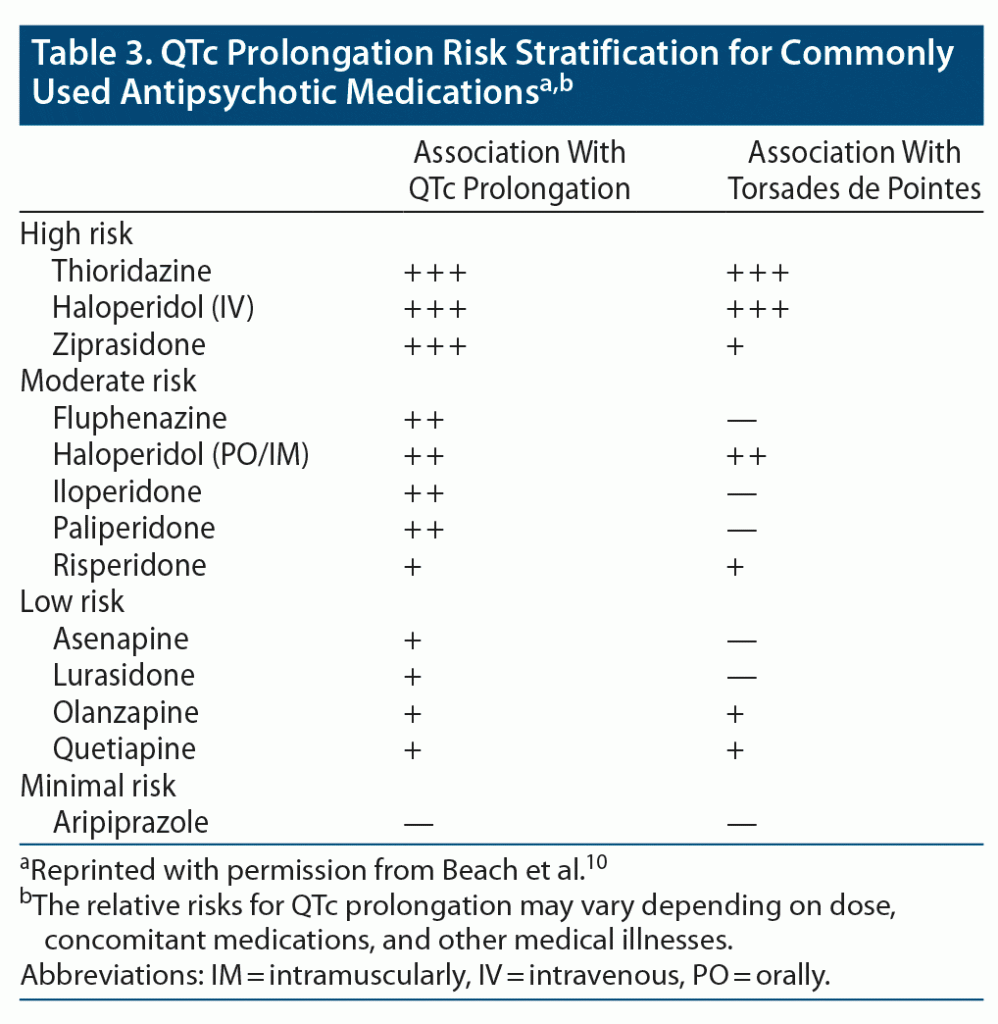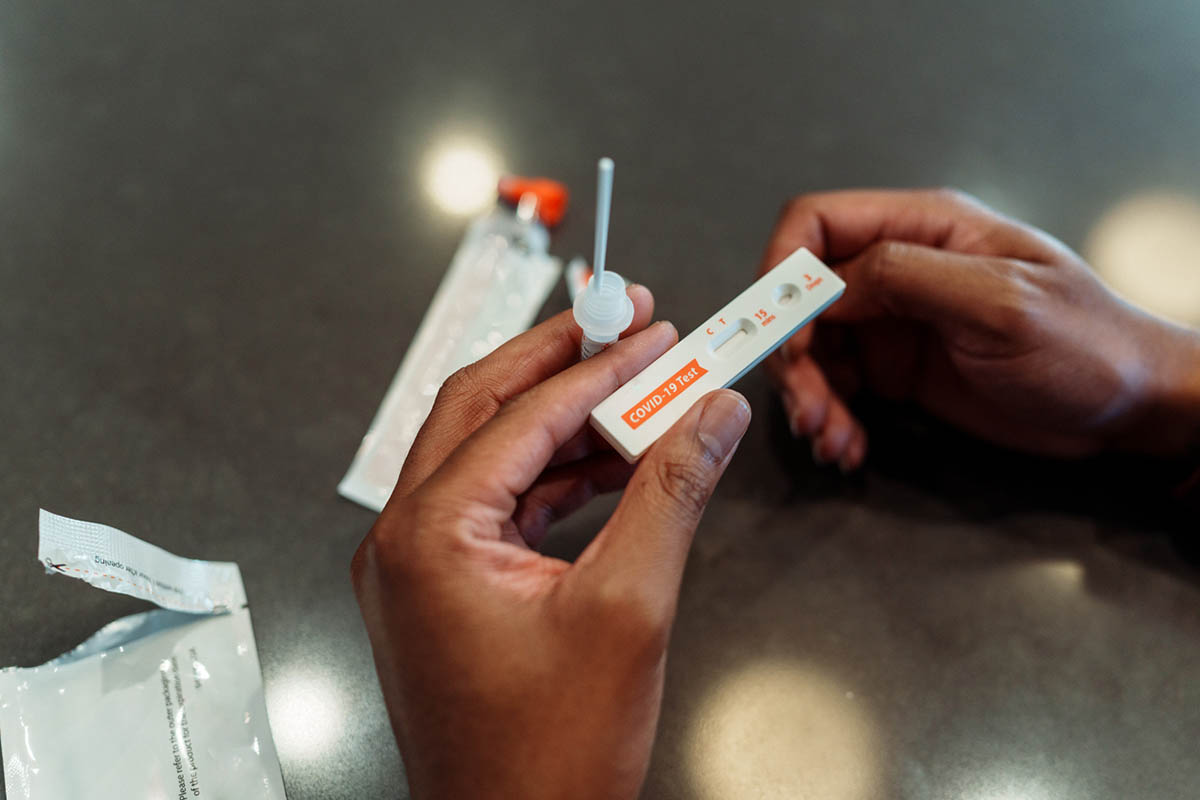Prim Care Companion CNS Disord 2022;24(5):22cr03312
To cite: Amazan R, Gunturu S, Korenis P. Hydroxychloroquine-induced QT prolongation in a COVID-19–positive patient on clozapine. Prim Care Companion CNS Disord. 2022;24(5):22cr03312.
To share: https://doi.org/10.4088/PCC.22cr03312
© 2022 Physicians Postgraduate Press, Inc.
aIcahn School of Medicine, New York, New York
bAlbert Einstein College, The Bronx, New York
*Corresponding author: Ralph Amazan, MD, 1276 Fulton Ave, 5th Floor South, Bronx, NY 10460 ([email protected]).
Hydroxychloroquine, an antimalarial medication, was approved in March 2020 by the US Food and Drug Administration (FDA) for treatment of hospitalized patients with coronavirus disease 2019 (COVID-19) infection.1 This drug is used in the treatment and prevention of malaria, a mosquito-borne disease caused by a parasite. It is also used to treat discoid lupus erythematosus, systemic lupus erythematosus, and rheumatoid arthritis due to its capacity to decrease the activity of the immune system.2 Despite widespread clinical use of hydroxychloroquine, insights into the mechanism of action of these drugs are still emerging. This drug interferes with lysosomal activity and autophagy, interacts with membrane stability, and alters signaling pathways and transcriptional activity, which can result in inhibition of cytokine production and modulation of certain costimulatory molecules. As all other medications, hydroxychloroquine can also cause some side effects. Side effects, also known as adverse events, are unwanted or unexpected events or reactions to a drug. Some of the side effects associated with the use of this medication include hemolysis, retinopathy, bone marrow failure, agranulocytosis, and QT prolongation.3
The QT interval is the time from the start of the Q wave to the end of the T wave. It represents the time taken for ventricular depolarization and repolarization. It is inversely proportional to heart rate. QT is prolonged if > 450 ms in men or > 460 ms in women.4 A number of causes including electrolyte imbalance as well as medications/drugs can lead to QT prolongation. Antipsychotic medications have long been known to have the potential to cause QT prolongation and torsades de pointes. Retrospective and cohort studies5 have linked antipsychotic use with sudden cardiac death, and most antipsychotic medications have been shown to cause some degree of QT prolongation.
Case Report
The patient was a 45-year-old, single, unemployed Hispanic woman who was currently on assisted outpatient treatment. She had a psychiatric history of schizoaffective disorder and a past medical history significant for hypertension, diabetes mellitus, and hyperlipidemia. She was transported from her residence to the comprehensive psychiatric emergency program (CPEP) by the fire department due to suicidal thoughts. At the time of initial evaluation, she was very guarded and labile. She was slow, with blocked thought process, and was internally preoccupied, reporting auditory hallucinations telling her that the medications were not good. She also reported poor appetite and sleep.
She was unable to give relevant information regarding signs and symptoms of COVID-19; nevertheless, she was placed in isolation while in CPEP due to a fever of 101°F. She was also restarted on her home medications, which included mirtazapine, lithium, risperidone, metoprolol, metformin, atorvastatin, docusate, and clozapine. An electrocardiogram (EKG) was done at admission and showed a corrected QT (QTc) of 393 ms, and a PCR (polymerase chain reaction) test was positive for COVID-19. The patient was then transferred to the inpatient psychiatry COVID unit. There, she was seen by the medical team, and they recommended hydroxychloroquine 400 mg plus azithromycin 500 mg by mouth daily for 3 days, droplet and contact isolation, and chest x-ray, as well as to stop risperidone and clozapine and monitor her QTc interval. On days 2 and 3 after starting treatment with hydroxychloroquine, her QTc was 481 ms and 486 ms, respectively. On days 2 and 7 posttreatment, her QTc was 479 ms and 451 ms, respectively. Then, clozapine was restarted and slowly titrated up. The patient’s psychiatric condition improved considerably after a week, and she was able to be discharged safely to the community.
Discussion
This case shows an increase in QTc interval caused by hydroxychloroquine, which was also reported by Saleh et al.6 The increase in QTc could have been worse in our patient if clozapine was not stopped during this time.
A systematic review and meta-analysis published by Ullah et al7 regarding hydroxychloroquine for the treatment of COVID-19 showed no benefits, while Meo et al8 suggested that hydroxychloroquine can successfully treat COVID-19 infections. Despite the controversy, this case aims to shed light on the importance of monitoring QTc via EKG in patients receiving hydroxychloroquine.9 More importantly antipsychotics should be avoided while patients are receiving this medication, since both hydroxychloroquine and most antipsychotics can increase the QTc. Holding clozapine and risperidone while our patient was being treated for COVID-19 decreased the potential negative impact on the QTc. Beach et al10 described the risk factors for prolonged QT, the nonpsychiatric medications associated with QTc prolongation, and the QTc prolongation risk stratification for commonly used antipsychotic medications (Table 1, Table 2, and Table 3). The half-lives of the medications in question must be taken into consideration. The elimination half-life of clozapine averages approximately 14 hours under steady-state conditions, but there is substantial variability across individuals.11 In poor metabolizers, the half-life of risperidone is about 19 hours compared with about 3 hours in extensive metabolizers.12 Hydroxychloroquine has a prolonged half-life, between 40 and 50 days.13
Conclusion
The COVID-19 pandemic has caused more than 700,000 deaths around the globe and more than 150,000 deaths in the United States. Psychiatric patients are also being hospitalized and receiving treatment with hydroxychloroquine. Holding antipsychotics and monitoring the QTc interval via EKG results are crucial to limit the adverse effect of QT prolongation of both medications.
Submitted: April 23, 2022.
Published online: September 20, 2022.
Relevant financial relationships: None.
Funding/support: None.
Patient consent: Verbal consent was received from the patient to publish this case report, and information was deidentified to protect anonymity.
References (13)

- Coronavirus (COVID-19) Update: Daily Roundup. FDA website. March 30, 2020. Accessed August 2022. https://www.fda.gov/news-events/press-announcements/coronavirus-covid-19-update-daily-roundup
- Casian A, Sangle SR, D’Cruz DP. New use for an old treatment: hydroxychloroquine as a potential treatment for systemic vasculitis. Autoimmun Rev. 2018;17(7):660–664. PubMed CrossRef
- Al-Bari MA. Chloroquine analogues in drug discovery: new directions of uses, mechanisms of actions and toxic manifestations from malaria to multifarious diseases. J Antimicrob Chemother. 2015;70(6):1608–1621. PubMed CrossRef
- Giudicessi JR, Noseworthy PA, Ackerman MJ. The QT Interval. Circulation. 2019;139(24):2711–2713. PubMed CrossRef
- Elliott A, Mørk TJ, Højlund M, et al. QTc interval in patients with schizophrenia receiving antipsychotic treatment as monotherapy or polypharmacy. CNS Spectr. 2018;23(4):278–283. PubMed CrossRef
- Saleh M, Gabriels J, Chang D, et al. Effect of chloroquine, hydroxychloroquine, and azithromycin on the corrected QT Interval in patients with SARS-CoV-2 infection. Circ Arrhythm Electrophysiol. 2020;13(6):e008662. PubMed CrossRef
- Ullah W, M Abdullah H, Roomi S, et al. Safety and efficacy of hydroxychloroquine in COVID-19: a systematic review and meta-analysis. J Clin Med Res. 2020;12(8):483–491. PubMed CrossRef
- Meo SA, Klonoff DC, Akram J. Efficacy of chloroquine and hydroxychloroquine in the treatment of COVID-19. Eur Rev Med Pharmacol Sci. 2020;24(8):4539–4547. PubMed. CrossRef
- Mohebbi N, Talebi A, Moghadamnia M, et al. Drug interactions of psychiatric and COVID-19 medications. Basic Clin Neurosci. 2020;11(2):185–200. PubMed CrossRef
- Beach SR, Celano CM, Noseworthy PA, et al. QTc prolongation, torsades de pointes, and psychotropic medications. Psychosomatics. 2013;54(1):1–13. PubMed CrossRef
- Jann MW, Grimsley SR, Gray EC, et al. Pharmacokinetics and pharmacodynamics of clozapine. Clin Pharmacokinet. 1993;24(2):161–176. PubMed CrossRef
- Mannens G, Huang ML, Meuldermans W, et al. Absorption, metabolism, and excretion of risperidone in humans. Drug Metab Dispos. 1993;21(6):1134–1141. PubMed
- Furst DE. Pharmacokinetics of hydroxychloroquine and chloroquine during treatment of rheumatic diseases. Lupus. 1996;5(suppl 1):S11–S15. PubMed CrossRef
Please sign in or purchase this PDF for $40.
Save
Cite






